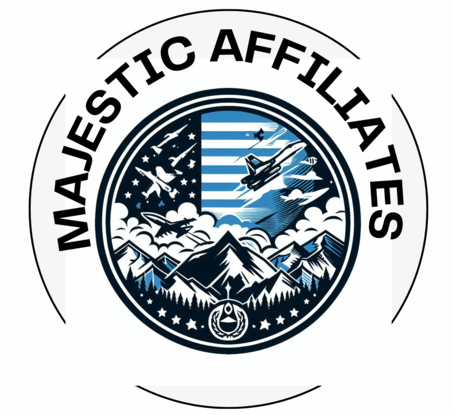Earning your first affiliate sale is an exciting milestone in your affiliate marketing journey. While the idea of making passive income sounds appealing, the initial steps can feel challenging. This guide will cover actionable strategies to help you make that first sale, from choosing the right niche to promoting your content effectively.

Step 1: Choose the Right Niche
The first step to making affiliate sales is targeting a niche that you’re passionate about and knowledgeable in. This not only helps you create content that resonates but also builds credibility with your audience. Here are some tips:
- Identify Your Interests and Expertise: Think about your hobbies, skills, and areas of knowledge. If you’re passionate about fitness, beauty, technology, or travel, you’re more likely to create compelling content that attracts an engaged audience.
- Research Profitable Niches: Look for niches that have a high demand but aren’t overly saturated. You can use tools like Google Trends, AnswerThePublic, and keyword research tools to gauge interest in different topics.
- Consider Audience Value: Ensure the niche you choose has products or services people are actively searching for, such as personal finance, e-commerce tools, wellness, or lifestyle.
Step 2: Select the Right Affiliate Program
Choosing a reputable affiliate program with products or services that align with your niche is essential to building trust with your audience. Look for programs that offer:
- High-Quality Products: Only promote products you’d personally use and endorse. Authenticity is crucial for gaining your audience’s trust.
- Competitive Commission Rates: Programs that offer high commission rates or recurring commissions can be more lucrative, especially for niches where customers purchase subscriptions.
- Support and Resources: Look for programs that provide marketing resources, product information, and reliable support.
Some popular affiliate programs for beginners include Amazon Associates, ShareASale, CJ Affiliate, ClickBank, and Impact Radius. These platforms offer a range of products across many niches, making it easier to find relevant items to promote.
Step 3: Create High-Quality Content
To drive traffic and make sales, you’ll need valuable content that resonates with your target audience. Here are some content ideas that work well for affiliate marketing:
- Product Reviews and Comparisons: In-depth reviews or product comparisons can help your audience make purchasing decisions. Include pros, cons, and unique features of each product.
- “Best of” Lists: Create lists, such as “Top 10 Budget Laptops” or “Best Skincare Products for Oily Skin.” These are popular search queries and can attract traffic from people looking for recommendations.
- How-To Guides and Tutorials: Educative content can be a powerful tool for affiliate sales. Show your audience how to use a product with step-by-step instructions, making it more likely they’ll make a purchase.
- Personal Recommendations and Testimonials: Share your own experiences with a product or service. Real-life testimonials can boost credibility and encourage trust.
- Gift Guides and Seasonal Content: Curate gift guides or seasonal recommendations for holidays, birthdays, or special occasions. These are highly shareable and often lead to increased affiliate sales.
Step 4: Optimize Your Content for SEO
To make affiliate sales, your content needs visibility. By optimizing for SEO (Search Engine Optimization), you increase the chances of your content appearing in search results. Follow these SEO tips:
- Target Relevant Keywords: Use keyword research tools (e.g., Google Keyword Planner, Ahrefs, SEMrush) to find terms your audience is searching for. Focus on long-tail keywords for more specific queries with lower competition.
- Optimize Meta Tags: Use descriptive meta titles and descriptions with keywords to improve your content’s click-through rate.
- Use Descriptive Headers: Organize your content with headers (H1, H2, H3) that include keywords, making it easier for search engines and readers to navigate your post.
- Add Internal and External Links: Link to other posts on your site and relevant external resources to create a strong linking structure and improve SEO.
Step 5: Drive Traffic Through Social Media
Social media is an excellent way to generate traffic and reach a larger audience for your affiliate content. Here are some effective strategies:
- Join Niche-Specific Facebook Groups: Contribute valuable insights, answer questions, and share relevant links to your content where appropriate. Be mindful of group rules regarding affiliate links.
- Use Pinterest for Visual Content: Pinterest is a powerful platform for affiliate marketing, especially if your niche is lifestyle, beauty, fashion, or DIY. Create eye-catching pins that link back to your affiliate content.
- Promote on Instagram and TikTok: Short, engaging videos or posts that demonstrate a product’s features or show how you use it can capture interest. Use call-to-action phrases like “link in bio” to drive traffic.
- Leverage YouTube: If video content is part of your strategy, YouTube can be a great source of traffic. Product reviews, tutorials, and unboxing videos can attract an audience interested in purchasing products.
Step 6: Use Email Marketing to Reach Your Audience
Building an email list allows you to engage directly with your audience. Here’s how to get started:
- Create a Lead Magnet: Offer a free downloadable resource, like an e-book or checklist, to encourage people to sign up for your email list.
- Nurture Your Subscribers: Send regular newsletters with valuable content, product recommendations, and exclusive offers. Avoid overwhelming your audience with too many affiliate links, as this can lead to unsubscribes.
- Include Call-to-Actions (CTAs): Directly encourage your readers to check out products or content. For example, “Want to learn more? Check out our review of XYZ product here.”
Step 7: Experiment with Paid Advertising (Optional)
If you have a budget, paid advertising can speed up your first affiliate sale. Platforms like Google Ads, Facebook Ads, and Pinterest Ads allow you to target specific audiences and drive traffic to your content. Here’s how:
- Set a Clear Budget: Start with a small budget to test ads and see what works before investing more.
- Target the Right Audience: Use targeting options, such as demographics, interests, and behaviors, to reach an audience that’s likely to convert.
- Optimize Your Landing Page: Ensure the page your ad links to is optimized for conversions. Include a clear call-to-action, easy-to-follow layout, and essential information about the product.
- Track and Adjust: Monitor your ad performance and make adjustments based on clicks, conversions, and ROI.
Step 8: Monitor Your Analytics and Refine Your Strategy
Tracking your progress helps you understand which content drives the most clicks and conversions. Use tools like Google Analytics, affiliate dashboard analytics, and social media insights to gather data and improve your strategy:
- Track Conversion Rates: See which pages generate the most clicks and conversions, then focus on creating similar content.
- Experiment with Different Content Types: Analyze what works best for your audience—blog posts, reviews, videos, or social media posts.
- Improve Underperforming Content: Update and optimize posts that aren’t performing well by adding keywords, enhancing visuals, or updating information.
Step 9: Be Patient and Stay Consistent
Affiliate marketing takes time, and it’s normal not to see results right away. Focus on creating valuable content, building trust with your audience, and experimenting with different promotional strategies. Staying consistent with your efforts is key to generating your first sale and eventually scaling your affiliate income.
Final Thoughts
Making your first affiliate sale may take time, but by following these steps, you’ll build a solid foundation for long-term success. By choosing the right niche, creating valuable content, optimizing for SEO, and engaging with your audience on social media, you’ll increase your chances of earning that first commission. Remember, the most successful affiliates are those who focus on providing genuine value to their audience and stay persistent in their efforts. Good luck, and happy selling!
